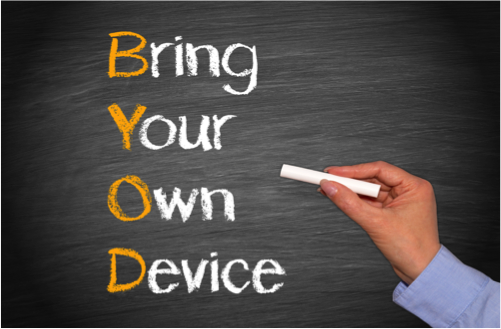 Bring Your Own Device (BYOD) refers to the action of allowing employees to use their own personal mobile devices or computers for their work, with access to company information and applications. BYOD is expected to increase in popularity over the next few years – 82% of people expect smartphones to play a critical role in business productivity in two years, according to IBM. And globally, the BYOD market is expected to grow to $181.39 billion by 2017, according to Markets and Markets. BYOD offers a variety of benefits for both employers and employees, including improved employee satisfaction, increased productivity, and cost savings.
Bring Your Own Device (BYOD) refers to the action of allowing employees to use their own personal mobile devices or computers for their work, with access to company information and applications. BYOD is expected to increase in popularity over the next few years – 82% of people expect smartphones to play a critical role in business productivity in two years, according to IBM. And globally, the BYOD market is expected to grow to $181.39 billion by 2017, according to Markets and Markets. BYOD offers a variety of benefits for both employers and employees, including improved employee satisfaction, increased productivity, and cost savings.
Employee satisfaction – Employees are typically happier using their own devices that they’ve chosen based on their personal preferences. Users can avoid carrying multiple devices around, such as a work cell phone and a personal cell phone by integrating the two.
Increased productivity – Oftentimes, it is cumbersome to make the transition back and forth from a personal computer to a work computer, as they’re usually two completely different setups. By allowing employees to bring their own devices, more time is spent working on the actual task rather than working on technological details. Personal devices also tend to be updated more frequently by the user and offer more cutting-edge features.
Cost savings – BYOD can help save businesses money by shifting costs to the user. Rather than the business using money to purchase company laptops and cell phones, employees pay for their own devices.
Before implementing BYOD, it’s important to keep in mind that BYOD must be managed safely in order to protect your business’ privacy and assets. As the telecommuting trend grows, the BYOD market is expected to grow as well, with softphone technology leading the way. Contact VirtualPBX to learn more about softphone technology and how you can integrate it into your BYOD plan today.






